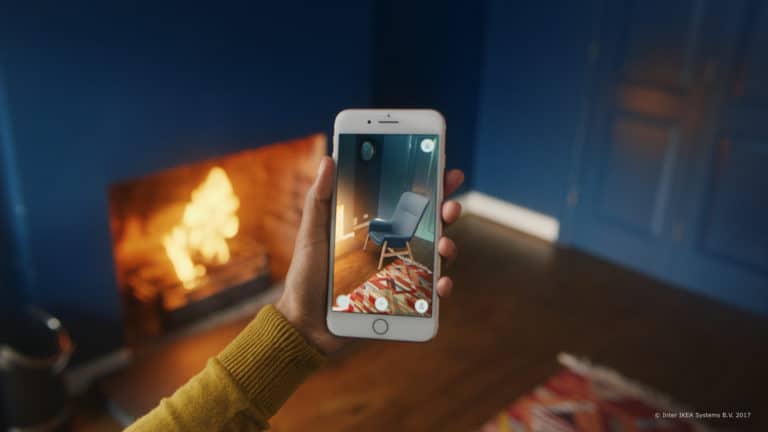
As AR layers digital elements onto the real world, it creates opportunities for brands to reengineer customer experiences (CX). This comes about as there’s a parallel shift in customer expectations. In fact, today’s consumers are no longer content with just passive consumption.
To put some numbers behind that claim, McKinsey data indicate that up to 71 percent of consumers crave personalized experiences, interactivity, and immersion. In an age of rapid technological advancement, static interfaces and one-size-fits-all solutions are fading. The modern consumer seeks dynamic engagements where they can be a participant and observer.
So how does AR scratch that itch? The technology can bridge the gap between digital convenience and tangible interaction. By superimposing digital elements onto the real world, it crafts immersive sceneries tailored to individual preferences. As consumers demand deeper connections with brands and products, AR sets new standards for engagement and experience.
Here are a few ways this is developing today.
1. Virtual Try-Ons
AR revolutionizes the shopping experience by enabling virtual try-ons. Customers can now preview products — like clothing, accessories, or furniture — in a virtual space. This digital “fitting room” gives users a realistic sense of how items look and feel.
Virtual try-ons save precious time, eliminating the need for physical fittings or visits to crowded stores. They also significantly reduce returns, as customers have a more precise expectation of the product before purchase.
Most importantly, these AR experiences lead to increased customer satisfaction. With better insights and fewer surprises, consumers enjoy a smoother, more confident shopping journey.
2. AR and Subscription Bill Summaries
In today’s digital age, managing multiple subscriptions — from streaming services to software tools — can be a daunting task. Keeping track of costs, renewal dates, and terms becomes a complex puzzle.
With AR, users can point their smart devices at a stack of bills or a screen displaying subscription details. In real-time, it overlays, consolidates, and summarizes these bills, highlighting critical information and presenting a clear financial snapshot.
Budgeting becomes a breeze with this technology. Users gain a rapid grasp of their expenses, ensuring no hidden costs slip through the cracks. Plus, with all information at their fingertips, making decisions about continuing or canceling subscriptions becomes prompt and hassle-free.
3. Personalized In-Store Shopping with AR
Imagine entering a store and instantly receiving product suggestions tailored to your taste. By analyzing a shopper’s history and preferences, AR can provide on-the-spot, personalized recommendations, guiding customers directly to items they love.
Beyond suggestions, it aids in seamless product location. Shoppers can easily find where a specific product is, reducing aimless wandering. Additionally, with AR glasses or smartphones, customers can instantly compare products.
By looking at an item, they can access reviews, compare prices and see alternative options, making informed decisions faster than ever. It results in a shopping experience that’s enhanced and incredibly efficient.
4. Making Ads Interactive and Memorable
AR is reshaping the advertising landscape. By infusing digital content into the real world, ads become interactive playgrounds. Instead of just viewing a billboard, users can point their devices and immerse themselves in a brand’s story, be it through a 3D product demonstration or an engaging mini-game.
This heightened interactivity leads to undeniable benefits. Firstly, engagement rates soar. Users aren’t just passive viewers — they’re active participants in the ad scenery. Additionally, these unique AR interactions etch memorable brand impressions in consumers’ minds. They remember the ad and recall the experience. With AR, people see and feel advertising, ensuring brands stand out in today’s crowded market.
5. Improving Customer Feedback and Engagement
AR-powered feedback systems are transforming the way businesses interact with customers. Instead of traditional surveys, users can provide feedback through interactive AR interfaces. They could point at a product with a smart device, and instantly rate or review it in an immersive environment.
By gamifying feedback, AR makes the process enticing. Customers could earn rewards, unlock virtual badges, or participate in AR challenges, all while providing their insights. This gamification enhances user engagement and boosts feedback participation rates.
6. Enhancing User Manuals and Product Interactions
Gone are the days of puzzling over intricate diagrams and lengthy written instructions. AR infuses traditional user manuals with dynamic, step-by-step visual guides. Imagine pointing a device at a product and watching assembly instructions play out in real-time, overlaying the product components. Users can visualize each step, making the process intuitive and less daunting.
This clarity simplifies assembly and empowers users to understand their products more deeply. It drastically reduces calls and queries to customer support. Users are more self-reliant and confident, resulting in fewer errors and a smoother overall experience.
The Potential of AR in CX
Picture attending a concert where AR amplifies the music with visual wonders or joining an expo where product demos come to life right before your eyes. These are not far-fetched dreams but the imminent reality of AR-powered events. The ambiance, interaction, and immersion reach unparalleled heights, crafting experiences that linger long after the event concludes.
For businesses, the message is clear. Embracing AR isn’t just about keeping up with the times — it’s about pioneering the future of customer engagement. With AR, the horizon is as vast as one’s imagination.
 Devin Partida is Editor-in-Chief of Rehack and editorial contributor at AR Insider. See her work here and follow her @rehackmagazine.
Devin Partida is Editor-in-Chief of Rehack and editorial contributor at AR Insider. See her work here and follow her @rehackmagazine.

